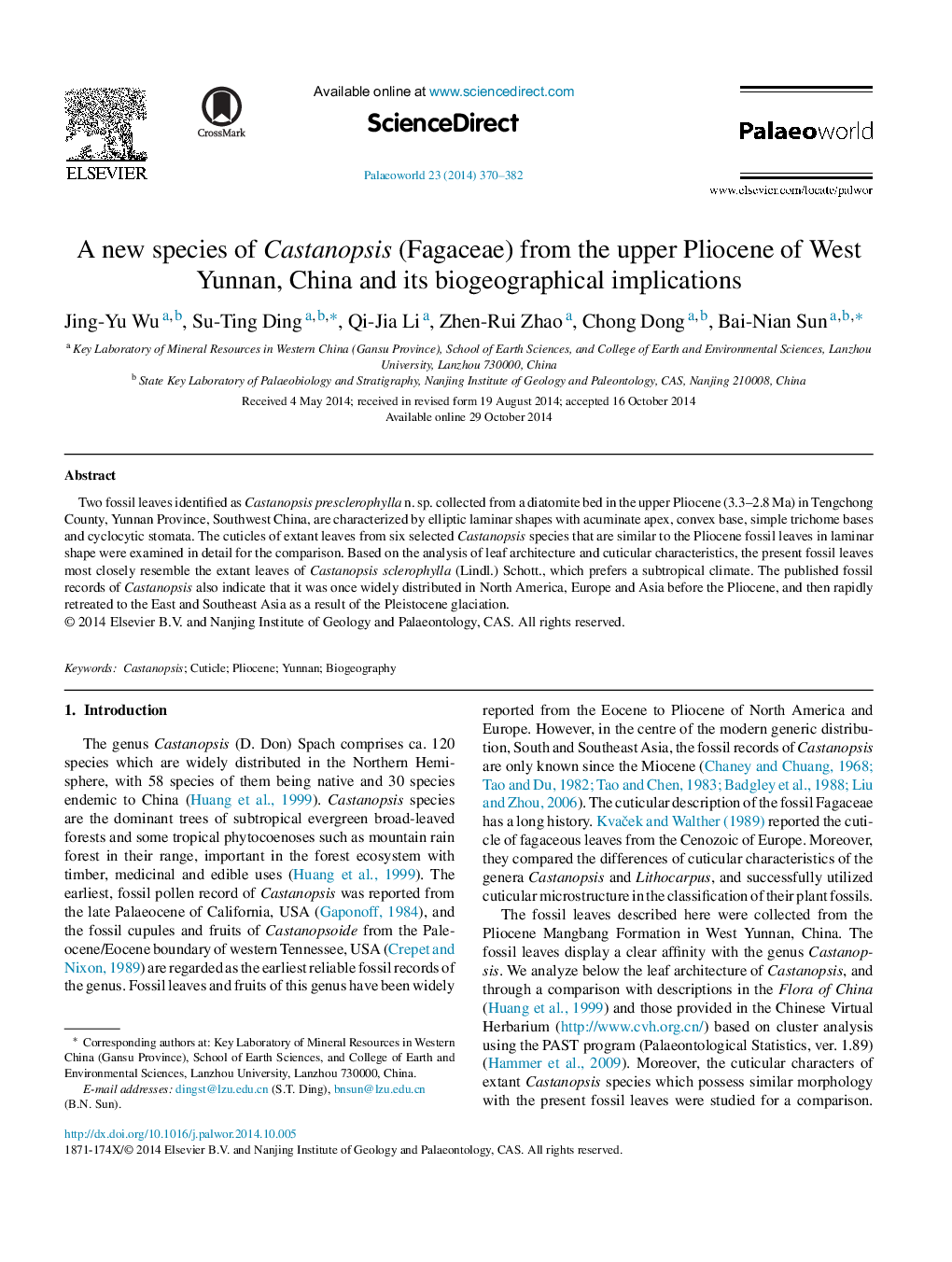| Article ID | Journal | Published Year | Pages | File Type |
|---|---|---|---|---|
| 4749780 | Palaeoworld | 2014 | 13 Pages |
Abstract
Two fossil leaves identified as Castanopsis presclerophylla n. sp. collected from a diatomite bed in the upper Pliocene (3.3-2.8Â Ma) in Tengchong County, Yunnan Province, Southwest China, are characterized by elliptic laminar shapes with acuminate apex, convex base, simple trichome bases and cyclocytic stomata. The cuticles of extant leaves from six selected Castanopsis species that are similar to the Pliocene fossil leaves in laminar shape were examined in detail for the comparison. Based on the analysis of leaf architecture and cuticular characteristics, the present fossil leaves most closely resemble the extant leaves of Castanopsis sclerophylla (Lindl.) Schott., which prefers a subtropical climate. The published fossil records of Castanopsis also indicate that it was once widely distributed in North America, Europe and Asia before the Pliocene, and then rapidly retreated to the East and Southeast Asia as a result of the Pleistocene glaciation.
Keywords
Related Topics
Physical Sciences and Engineering
Earth and Planetary Sciences
Palaeontology
Authors
Jing-Yu Wu, Su-Ting Ding, Qi-Jia Li, Zhen-Rui Zhao, Chong Dong, Bai-Nian Sun,
